How to redesign an animated Batman
The artists behind Caped Crusader explain how they revamped an iconic character.
by Eric Vilas-Boas, guest contributor
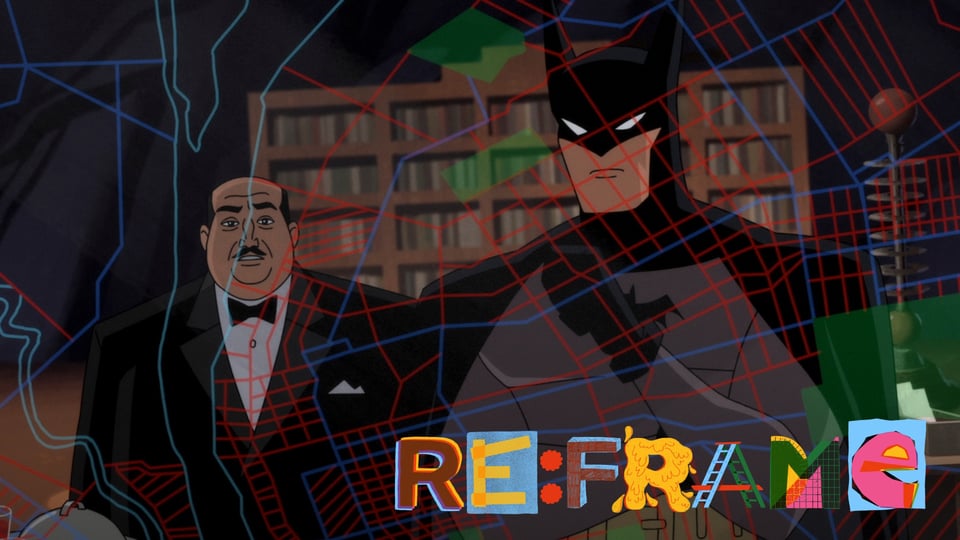
The reputation of Batman: The Animated Series is practically unassailable these days. Its mature storytelling, dark atmosphere, and overall production quality changed animation and superhero stories forever, inspiring future artists to push the boundaries of kids' TV and comic books alike. The Batman designed by one of its creators, Bruce Timm, endures to this day. Still, Timm and his longtime producing collaborator James Tucker, thought there was more to explore in their latest show, Batman: Caped Crusader, which premiered a year ago last month. Tucker suggested one idea that wound up becoming a mantra for the show: Lean into the horror of the character, and make him like Michael Myers.
"It's like Halloween: You never see Michael Myers in closeup, he's always just a shape," Timm recalls Tucker pitching. "And we all just kind of went, 'Yeaaaaah, let's do that!'"
The artists opted to give Batman a monstrous mystique. He calls Alfred "Pennyworth," he has no Robins (save for a memorable cameo), and his Gotham is set in the '40s, when some of his earliest comics appeared. Their choices make him colder and less human than the Batman of The Animated Series, and taken together, they underscore the hurdles of re-tooling characters who've gone through decades of redesigns — including those Timm and Tucker have worked on — like Justice League, Batman Beyond, and WB's direct-to-video animated films.
As the directors and producers made clear to me in this previously unpublished conversation last year, on the heels of their first season, it proved difficult to redesign villains like Harley Quinn (now Asian-American, and very single) and bat off notes from execs (and even staffers) who were expecting a rehash of the greatest superhero cartoon ever made.
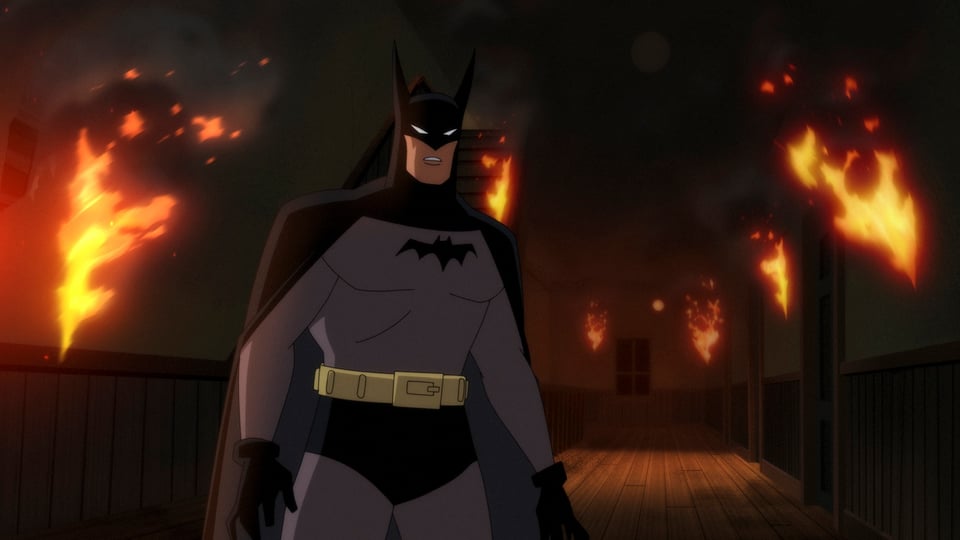
This new show has more of the Batman: The Animated Series flavor than the DC animated movies you've worked on in recent years. Why return to doing Batman on TV, in a noirish, 1940s setting?
Bruce Timm: James and I are both big fans of the movies of that period, and when I was discovering comics as a teenager, I was also devouring pulp-hero reprints and paperbacks — Doc Savage and the Avenger. So this is stuff near and dear to both of our hearts. It's also the era when Batman himself first started making a mark. Just like our original inspiration for B:TAS, the setting was something we felt like we could really have fun doing.
James Tucker: It was a chance to do an homage. B:TAS wasn't by design meant to be the '40s. This is styled after a 1940s movie. It's not meant to be a docudrama about what it was really like in the '40s. The idea was: If we were making a show now in the 1940s, how would it look?
This is a Damaged Batman. That's my term. It wasn't the edict for the show. That was really a hurdle because everyone who was attracted to working on the show was because of its association with B:TAS! And then they were told, "Well, we are not doing B:TAS."
BT: That goes to the way we treat the — I hate to say it — but the diversity angle, the inclusivity angle. We know that an Asian psychiatrist in the middle of the 1940s probably was not going to not cause people to do a double take. The same with having a Black police commissioner. It's not like racism has been solved in 2024. We tangentially deal with those issues with these characters, but not in a realistic 1940s way.
The way we treat things visually and story-wise is if this was a cartoon made in the 1940s. It's freeing to not have the restriction against certain kinds of violence that we had back in the B:TAS days. We can show somebody shoot a gun and somebody else get hit by the gun and fall over and die. But it's not a gore fest.
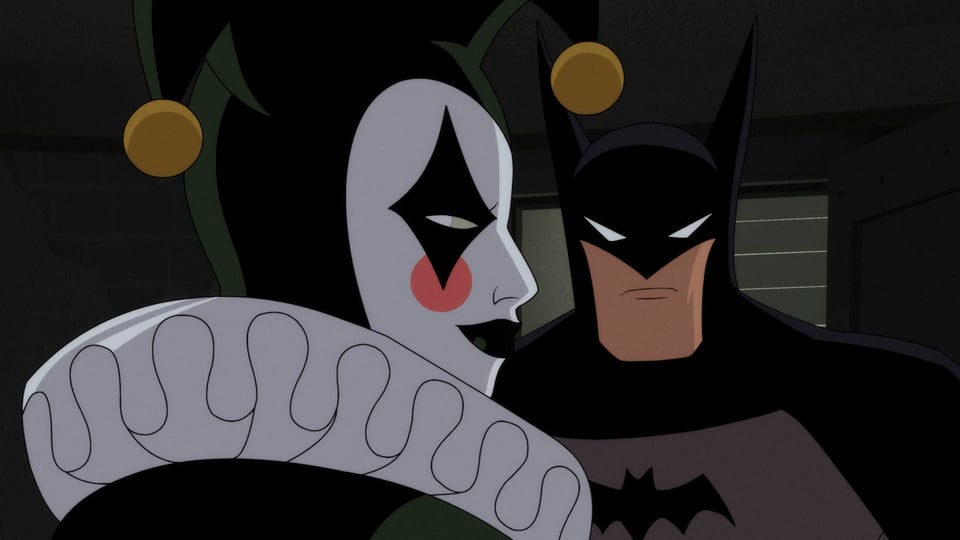
I've always seen the violence in your shows as a quote-unquote "problem" you solved creatively. B:TAS is an action-packed show that was also palatable to 7-year-olds. Another problem: expanding the cast of Justice League to include basically every DC character. You've turned these — we can call them limitations or challenges, maybe — into opportunities. What problems did you find yourselves solving on this show?
BT: In a lot of ways, the only limitations we had were ones that we set for ourselves. The interesting thing was when we started doing the show, it was meant for HBO Max. They even gave us an age range. I can't remember what it was, TV-14?
JT: It was family viewing. Kids can watch, but Mom and Dad can watch too.
BT: We did have somebody who worked kind of like a censor in the old days, like broadcast standards and practices. They would give us notes on all of our scripts and storyboards. "You can't do that with this kind of rating. That's a little too violent or a little too intense." We'd have to say, "OK, what's our work-around?" And strangely enough, once Amazon picked up the show, it was kind of like, "Hey, Invincible was a big hit for us. You can go crazy with the violence!" And we were like, "Uhhhhh. We're good."
JT: You talk about problems. B:TAS casts a long shadow. The challenge we had early on was that everyone wanted to write B:TAS. This isn't B:TAS. This is Batman before he was the warm, cuddly B:TAS version. This is a Damaged Batman. That's my term. It wasn't the edict for the show. That was really a hurdle because everyone who was attracted to working on the show was because of its association with B:TAS! And then they were told, "Well, we are not doing B:TAS."
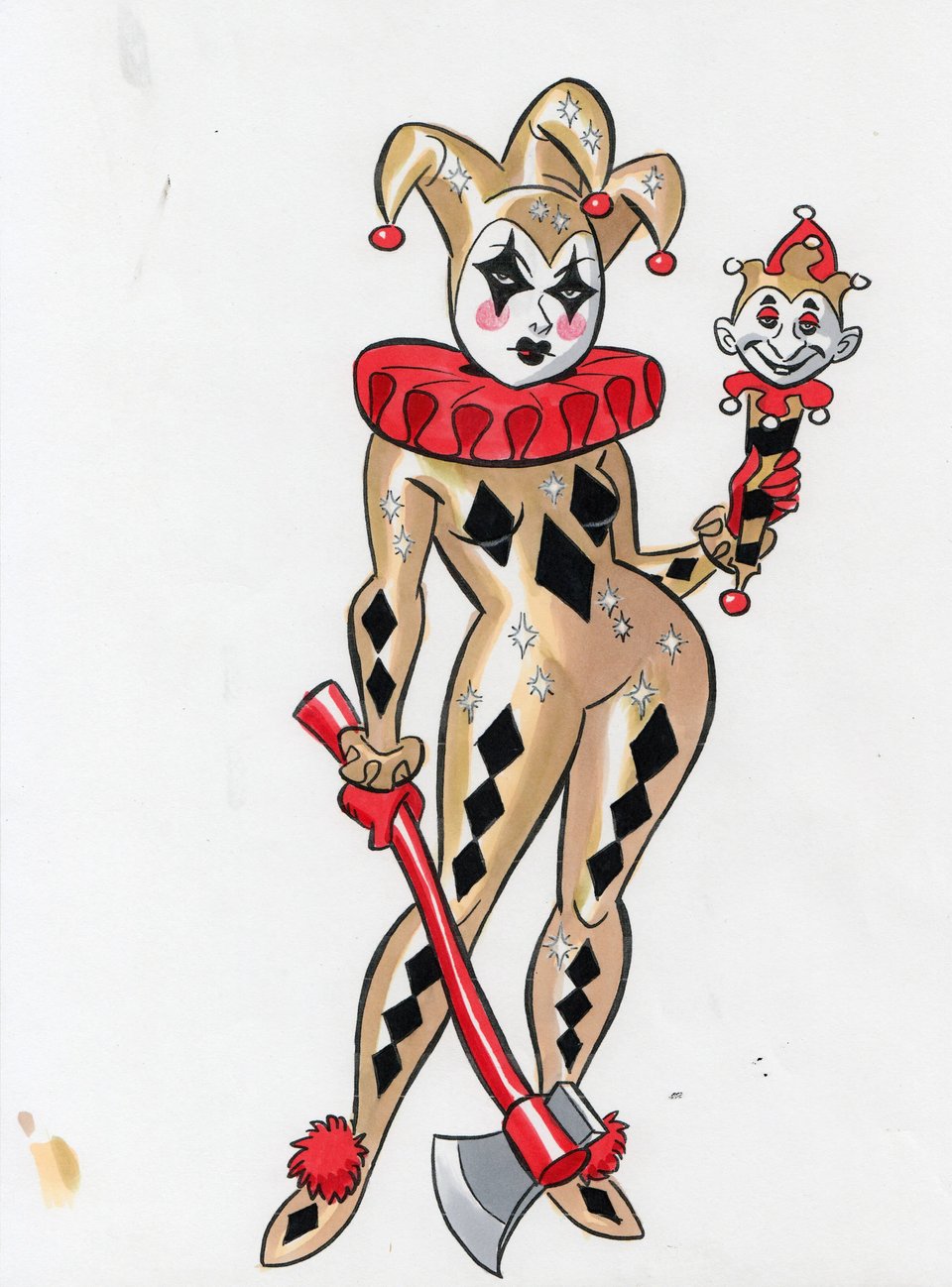
BT: People would fall into the same traps. We had set the template for how to do a realistically dramatic superhero show back in the '90s. They grew up watching B:TAS, so they've absorbed that film language: Now we're going to cut to Batman and his eyes are going to squint, and things like that.
Even our execs would be expecting that when they'd give us notes on storyboards. "Oh, can we have a closeup here of Batman so we can see how he's reacting to the situation?" And it's like, "Well, no, because Batman doesn't react to situations. He's very closed off emotionally. We can cut to a close up, but he's not going to give you anything you're not going to see in a wide shot." That was the challenge. Constantly, "Can Batman show more emotion here, what's he thinking?" We don't know what he's thinking. He's enigmatic. Even communicating that to our directors and our storyboard artists, we had to figure that out.
Some shots hearken specifically back to B:TAS. There's one profile shot of him in the Batmobile, with the shadows moving over his mask. There's the hero shot of him back-lit by lightning in the last episode. Did you feel that you needed to insert those callbacks? Was it something the execs specifically asked for?
BT: In that first shot you're talking about, of Batman in the Batmobile, he's kind of immobile, he's not exactly in closeup, and the shadows are covering him up. It is a B:TAS lift, but it works for this version of Batman. Now, the lightning shot you're talking about, that's placed at a point in this series where it works as a ta-da moment. It's not something we did willy-nilly. That shot serves a specific purpose.
JT: Contextually that shot's a little different. In the B:TAS iconic shot, he's looking out to space. He's looking out to the city saying, "I'm defending you." The shot in Caped Crusader, he's aiming that specifically at someone. It’s a one-on-one thing. It wasn't just an homage. It had a reason for being in the show in that way. It's more personal.
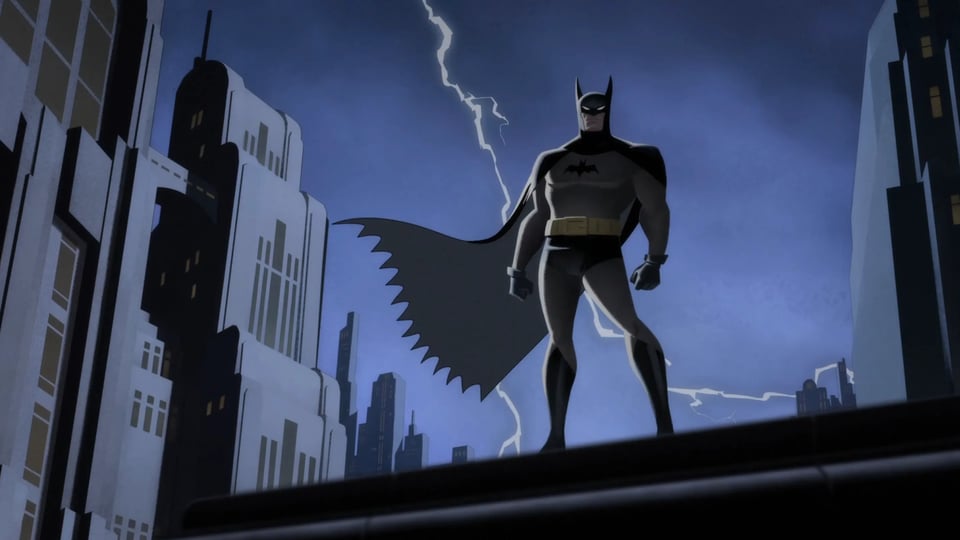
In one he's a protector, and in the other he's literally threatening someone.
JT: Exactly. It's more personal.
BT: But we do love Easter eggs. There are obvious homages.
JT.: Not as many as fans online seem to think, though. They see it everywhere. And I'm like, "Actually, no, we weren't doing that at all to be like B:TAS!"
What is the biggest misinterpretation you’ve seen about the new show? Is there anything that makes you wish viewers had gotten what you were going for?
BT: Not all the reviews have been positive, but so far? We were worried that people wouldn't get it, but for the most part, they really get it. Even the people who don't like the show overall or who have criticisms, they're like, "We really like this new Harley." That was our biggest worry, that people would go, "Oh, it's 'Asian Harley.' She's not the red-and-black costumed, wacky, adorable Arlene Sorkin version." But they're responding pretty positively, which — thank God. Jamie Chung did an amazing job with the voice. It's such a complete 180° from what we did in the old show. People seem to really like our new Batman, Hamish Linklater, which is great.
JT: Everything we decided to do, when you see it in context, it makes sense. It fits. There were creative reasons to do things.
BT: One of the things that I've been gratified to see people noticed is the different female body types. I thought that was going to be a little too subtle for people, but they seem to respond pretty well to that. So that's been kind of nice.
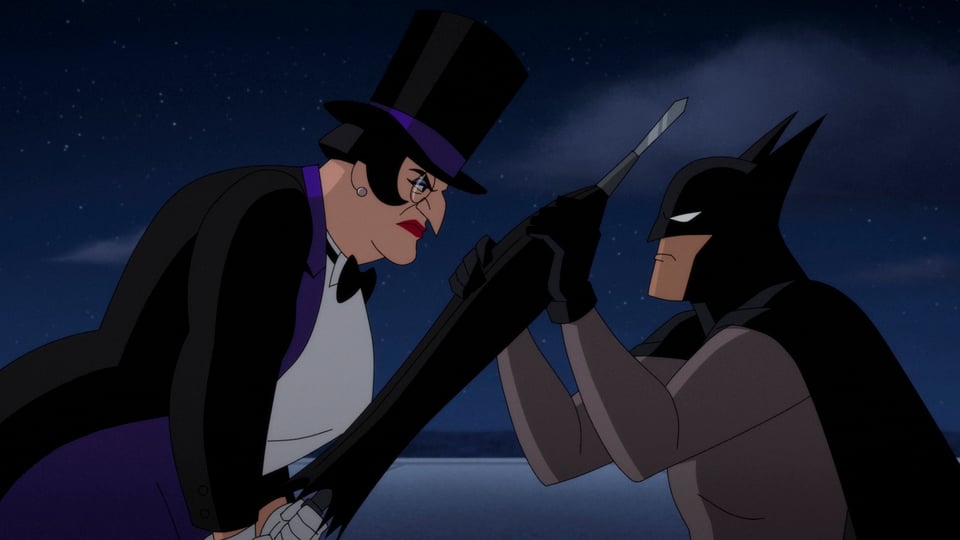
In one of her episodes, Harley punishes a slick-haired, union-busting businessman. Some of the villains are landowners or corrupt public servants. You made the show in a period of labor unrest in Hollywood in general and in animation in particular. Was your Batman show a comment on eating the rich?
BT: Maybe subconsciously? We had the writer's strike and the animation strike right in the middle of this show.
JT: Huge pandemic…. [Laughs.] A lot going on!
BT: When we first pitched the Gentleman Ghost story, we did pitch that he's like an evil—
JT: One-percenter.
BT: From the Revolutionary War period. That was deliberate. Uhhh, yeah, probably the Harley thing, too, going after rich businessmen who are horrible. That was much more about these guys just being — not so much that they are capitalists — but it was just that they were rich and entitled. They treated people like shit because they could.
JT: Then they'd go to therapy to be told they're OK.
BT: Yeah, exactly! They would dump all their shit on Harley and then feel better about themselves. She figures out, Well, I can do something about it if I have an alternate personality.
JT: I do think, having worked on a lot of these over the years, that the times you make the show influence you — whether you're conscious of it or not.
BT: Exactly.
JT: That was definitely the case with Justice League and Justice League Unlimited. And this show to a degree. It would've been different from B:TAS, even if we had tried to remake B:TAS, because the times we were making it were so different than '92.
BT: B:TAS is very much in the Bill Clinton era.
JT: The angst is character-flaw based. All the villains had one bad day. And in this one, no, corruption is the villain. Corruption is affecting everything.
Batman: Caped Crusader is available to stream on HBO Max.